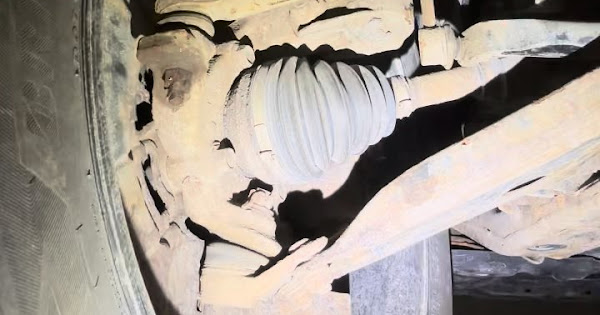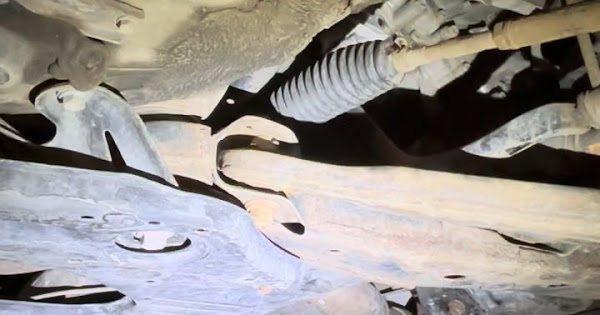I have a 2016 Lexus RX (nee Toyota Highlander) with only 70,000 miles. The last few weeks it developed a clunk in the steering wheel when turning at parking lot speed. If the vehicle is stationery, and you turn the wheel it clunks when moving off centre / changing directions. It can be quite loud if you're slowly backing out of the driveway. It drives normally on the highway (although might be starting to wander a bit) and doesn't seem to make any noises over bumps (although it is hard to tell with the much softer winter tires).
I've jacked it up and there's no ball joint play at 12 and 6. At 3 and 9 there's movement and it has a very loud clunk when I rock the wheel. I figured tie rod, but can't figure out which one. When I hold the outer tie rods they seem to not have excessive play. I took the pry bar to the tie rods and stabilizer links. They all seem to have no play and I could not replicate the knocking. There's no difference in driver's side to passenger side, and both wheels on the front have similar amounts of play.
I tried to check the steering rack mounting bolts and again I found no movement. I also checked the intermediate steering shaft and it seemed to have no movement at the universal joints. When I push the tires at full lock from the outside they still "wiggle" and clunk.
I thought maybe it was something funny like strut mount bearings. I then looked through my records and the front struts and strut mounts were actually replaced under warranty 3.5 years ago 20,000 miles by the dealer trying to track down a rattle in the suspension. It's hard to believe they'd be faulty already with normal wear and tear (no accident or massive pothole).
I tried to take a few videos:
Clunk:

 photos.app.goo.gl
photos.app.goo.gl
Outer tie rods:

 photos.app.goo.gl
photos.app.goo.gl

 photos.app.goo.gl
photos.app.goo.gl

 photos.app.goo.gl
photos.app.goo.gl
Inner tie rods:

 photos.app.goo.gl
photos.app.goo.gl

 photos.app.goo.gl
photos.app.goo.gl
Any thoughts? What else could I check? I hate to start throwing parts at it.
THanks!
I've jacked it up and there's no ball joint play at 12 and 6. At 3 and 9 there's movement and it has a very loud clunk when I rock the wheel. I figured tie rod, but can't figure out which one. When I hold the outer tie rods they seem to not have excessive play. I took the pry bar to the tie rods and stabilizer links. They all seem to have no play and I could not replicate the knocking. There's no difference in driver's side to passenger side, and both wheels on the front have similar amounts of play.
I tried to check the steering rack mounting bolts and again I found no movement. I also checked the intermediate steering shaft and it seemed to have no movement at the universal joints. When I push the tires at full lock from the outside they still "wiggle" and clunk.
I thought maybe it was something funny like strut mount bearings. I then looked through my records and the front struts and strut mounts were actually replaced under warranty 3.5 years ago 20,000 miles by the dealer trying to track down a rattle in the suspension. It's hard to believe they'd be faulty already with normal wear and tear (no accident or massive pothole).
I tried to take a few videos:
Clunk:
New video by J M
 photos.app.goo.gl
photos.app.goo.gl
Outer tie rods:
New video by J M
 photos.app.goo.gl
photos.app.goo.gl
New video by J M
 photos.app.goo.gl
photos.app.goo.gl
New video by J M
 photos.app.goo.gl
photos.app.goo.gl
Inner tie rods:
New video by J M
 photos.app.goo.gl
photos.app.goo.gl
New video by J M
 photos.app.goo.gl
photos.app.goo.gl
Any thoughts? What else could I check? I hate to start throwing parts at it.
THanks!
Last edited:
